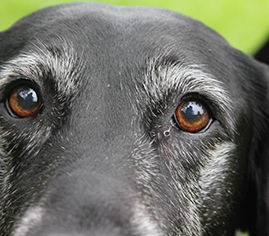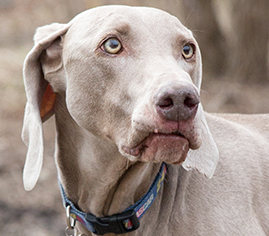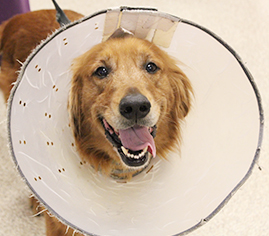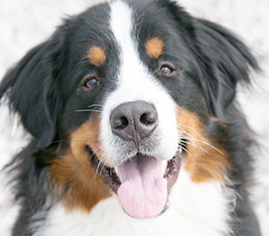Kelly Serfas, a Certified Veterinary Technician in Bethlehem, PA, contributed to this article.
There are many myths surrounding surgery for dogs. Here are 8 of the most common myths – debunked for you. 1. Myth: “My dog is too old for anesthesia”
1. Myth: “My dog is too old for anesthesia”
Please do not let your neighbor, your friend or the internet tell you that your dog is too old or sick for anesthesia. And don’t be afraid to seek out an expert on the topic. Keep in mind, if your dog is that old, surgery is probably not being recommended for merely cosmetic reasons. Your veterinarian is probably talking about it because of a life or death situation, or a serious quality of life issue.
A thorough physical exam and blood work should always be performed before anesthesia. In older dogs, it may be wise to also take chest and belly radiographs, as well as an ECG to be safe. Some dogs may need to be stabilized prior to anesthesia, which may mean fixing blood work abnormalities, giving IV fluids, or giving a blood transfusion prior to anesthesia and surgery. 2. Myth: “Surgery is painful”
2. Myth: “Surgery is painful”
This is actually a true statement. However, surgical pain should not be ignored in 2015. We have many safe pain medications to choose from to treat pain before, during and after surgery. We should also remember that depending on what dogs’ conditions are, they are most likely already in pain, which will continue to stay the same or worsen without surgery. The goal of surgery is often to decrease pain. 3. Myth: “There is no point if there is no cure”
3. Myth: “There is no point if there is no cure”
This mostly relates to dogs with a tumor. It is a matter of opinion and expectations. And it’s a very personal decision.
Without the benefit of a biopsy, we don't know whether a mass is cancerous or benign until it is removed and analyzed. Even when a mass is cancerous, it doesn’t necessarily mean that it’s the end of the road.
Ultimately, your decision should not be based only on quantity of life (survival), but mostly on quality of life.
Ironically, sometimes, the situation doesn’t depend on whether a mass is benign or cancerous, but on where it is located. A perfectly benign mass blocking the windpipe, the esophagus (the tube between the mouth and the stomach) or the urethra (the tube between the bladder and the outside world) will have life-threatening consequences. 4. Myth: “My dog will not survive confinement”
4. Myth: “My dog will not survive confinement”
Confinement is often required after surgery. The time required depends on the procedure. Confinement may be in a crate, an upside down baby/puppy play pen, a small room, or part of a room. The larger the dog, the larger the area can be – within reason of course. It may seem cruel to some, but preventing jumping and running is critical to allow proper healing. Outdoors, dogs in recovery need to be under supervision and on a leash for just enough time to eliminate. Dogs don't know what is best for them. You should.
Interestingly, most dog guardians I deal with regularly tell me that in the end, confinement was easier than they expected. 5. Myth: “I can’t keep a plastic cone on my dog”
5. Myth: “I can’t keep a plastic cone on my dog”
Sure, a plastic cone can be a royal pain depending on how clumsy your dog is. But this "necessary evil," worn for two weeks, is not nearly as bad as another surgery to stitch up a chewed incision. And it sure is cheaper than paying for this second surgery!
There are a few alternatives to the standard "lamp shade" or Elizabethan collar such as neck braces or inflatable “donuts.” Not all of these options will work, depending on where the incision is located, so alternative options must be discussed with your surgeon or family veterinarian.  6. Myth: “There's always a cheaper way”
6. Myth: “There's always a cheaper way”
Sure, you can get to work in a beat-up truck or in a Ferrari. You can go to work in worn-up, second-hand clothes or in a tailor-made suit. But when it comes to surgery, the choices are suddenly much more important. Seeking the cheaper surgery may not be in your dog’s best interest. Which corner do you want to cut? Not give pain medications? Not give antibiotics? Not use sterile equipment? Unfortunately, good equipment, good staff and good skills cost money. And this is reflected in the cost of surgery. The good news is you can get an insurance plan for your dog to avoid this financial dilemma. 7. Myth: “I can just use medication instead”
7. Myth: “I can just use medication instead”
I am very sorry to say that I have met several dogs with laryngeal paralysis (a horrible condition that causes suffocation) and with chronic otitis (most commonly Cocker spaniels with painful, repeated ear infections) who had been treated “medically” (i.e. with medications) for months to years. These dogs suffer on medications, while surgery could have provided much better results. The medications only address the signs, and usually poorly. Surgery addresses the cause of the condition.
As I always say, “the disease is the enemy. Surgery is your friend.” 8. Myth: “Things will get better by themselves”
8. Myth: “Things will get better by themselves”
The difficulty is that you cannot tell if vomiting is a sign of something benign or something serious. Sometimes, vomiting is due to eating a bit too much or a bit too fast. And sometimes, vomiting is due to a foreign body which requires surgery to be removed. So don’t procrastinate; seek help from your family veterinarian sooner rather than later. Waiting too long can have devastating consequences on your dog’s health.
These 8 myths are not meant to offend anyone. They are based on observations made over years of practice. Sure, there are complications, expected or not, during and after surgery. Fortunately, most of the time, surgery can make a world of difference for your dog.
Questions to ask your veterinarian about surgery:
- What are the goals of the surgery you recommend?
- What would happen if we didn’t do the surgery?
- What can I do to ensure my dog’s comfort after surgery?
If you have any questions or concerns, you should always visit or call your veterinarian -- they are your best resource to ensure the health and well-being of your pets.
